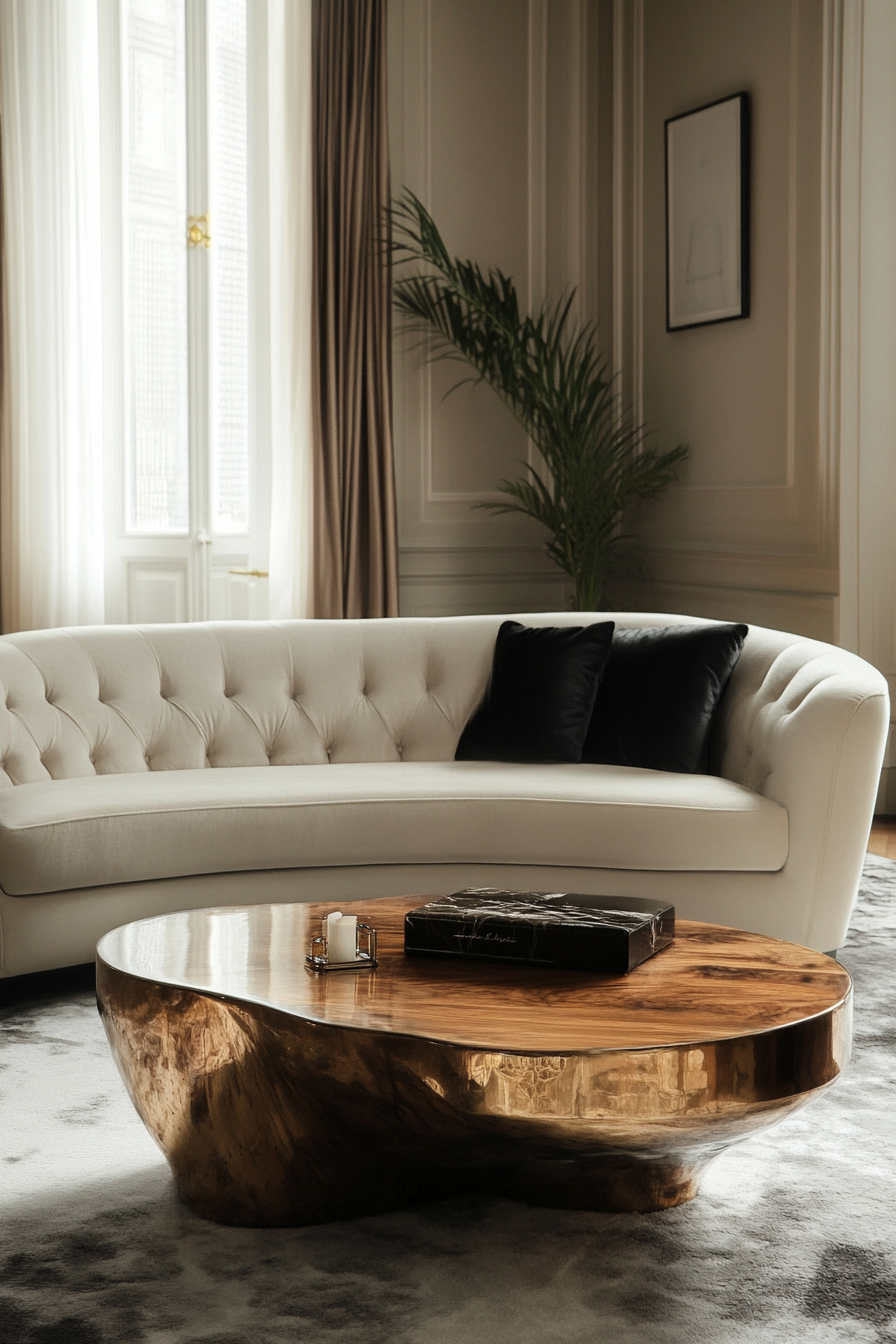A large sectional sofa could be just what you need.
Sectional sofas are made up of separate modules or pieces that can be arranged to fit your unique space.
With the right configuration, a sectional can not only provide plenty of comfortable seating but also open up and define spaces in an open floorplan.
I’ll also talk about the pros and cons of each sectional arrangement.
✨Click to Get My 101 FREE Designer Room Ideas
U-Shaped Sectional
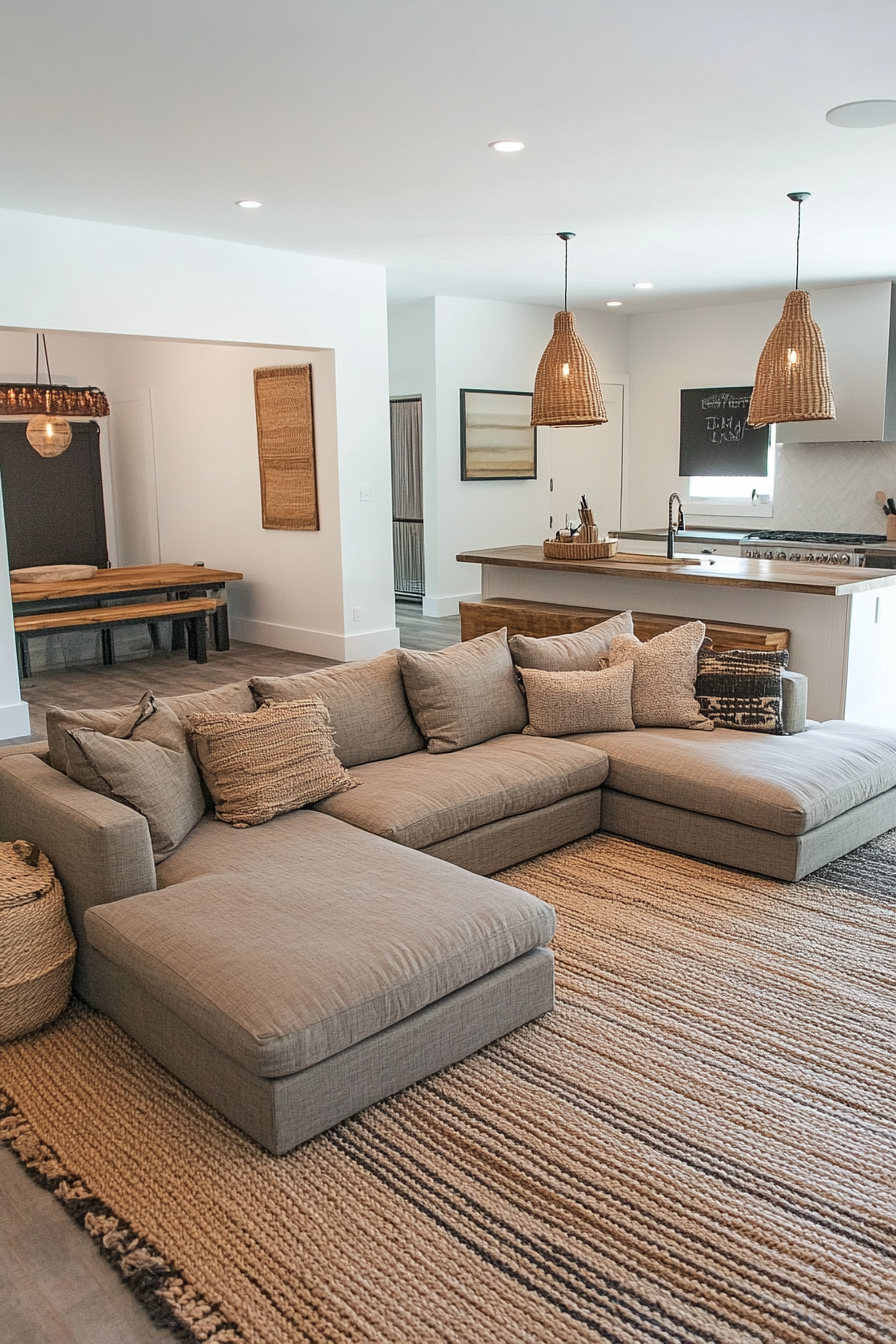
Let’s start with one of the most popular large sectional configurations – the U-shaped sectional.
As you can guess from the name, this sectional wraps around on three sides to create a U shape.
Typically, the U-shaped sectional faces the focal point of the room, such as the fireplace or TV.
This leaves one side of the U open to define the space.
A U-shaped sectional is great for maximizing seating while also designating specific zones in an open floorplan.
For example, it can divide a living room and dining space yet still allow movement and flow between the two areas.
The enclosed side of the U acts as a protective barrier from busy kitchen or entry spaces.
And the open end of the sectional invites movement into the defined living space.
The main downside of U-shaped sectionals is they can box you into one area.
If you prefer more fluid, multi-use spaces, a U-shaped sectional may feel too fixed.
But if you have a large open living area and want to carve out a cozy entertainment space, a U-shaped sectional is a perfect choice.
Sectional Facing Away from Focal Point
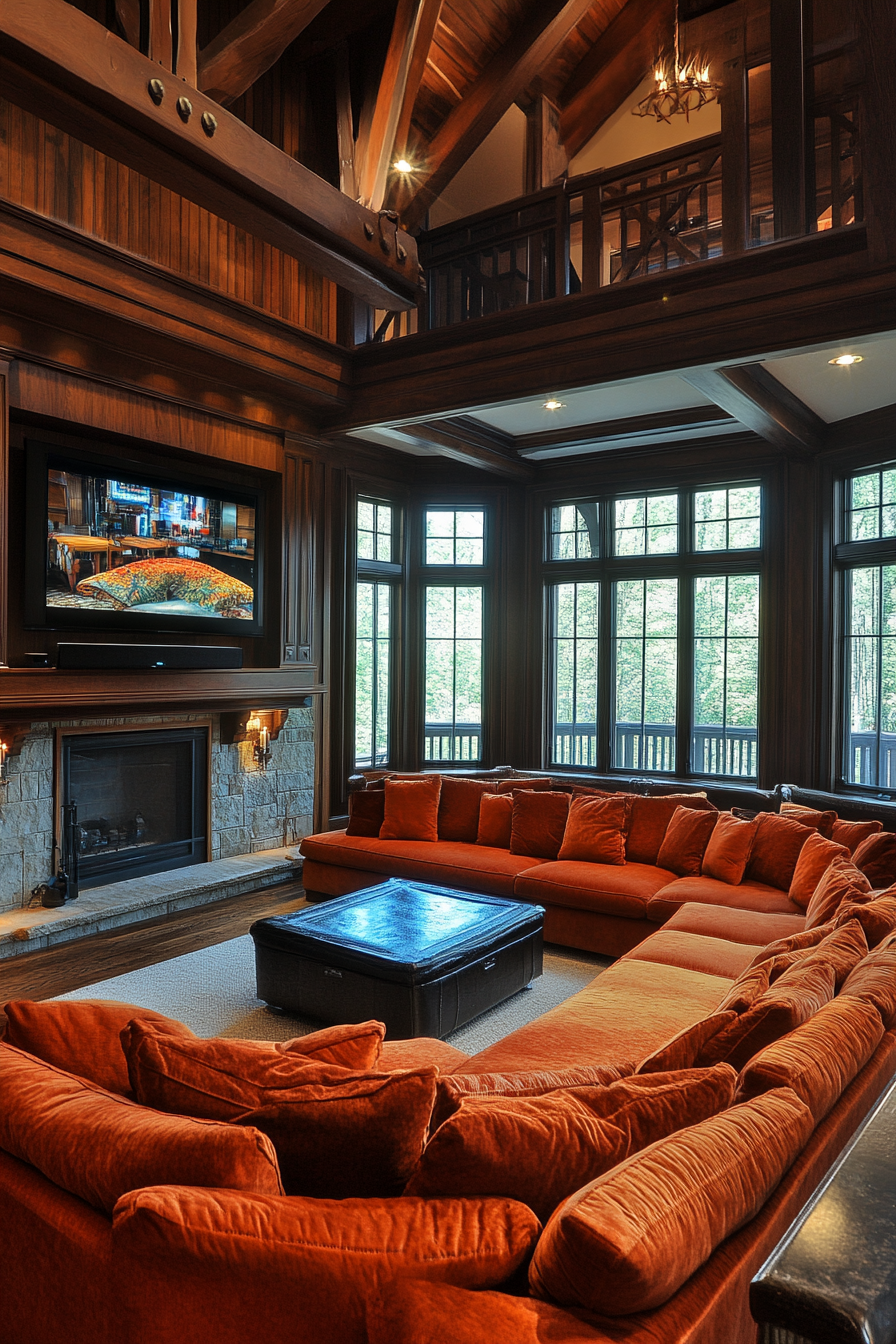
Here’s an unconventional idea – position your large sectional facing away from the main focal point or entertainment area..
This is great for prioritizing conversation over media viewing.
It defines a central hangout space separate from the distraction of electronics.
You can even add a second seating area by the TV for those who want to enjoy shows.
Facing the sectional away from the prime focal point also frees up floorspace in front of the TV.
This creates room for activity zones, game areas, or even a bar cart or buffet table.
Just be sure to leave enough space for easy TV viewing from the secondary seating behind the sectional.
And integrate stylish console tables behind the sectional to fill what would normally be wasted space.
Overall, a sectional facing away from the action represents a symbolic shift toward interaction and reminds us what furniture is really for – bringing people together!
Sectional Facing TV
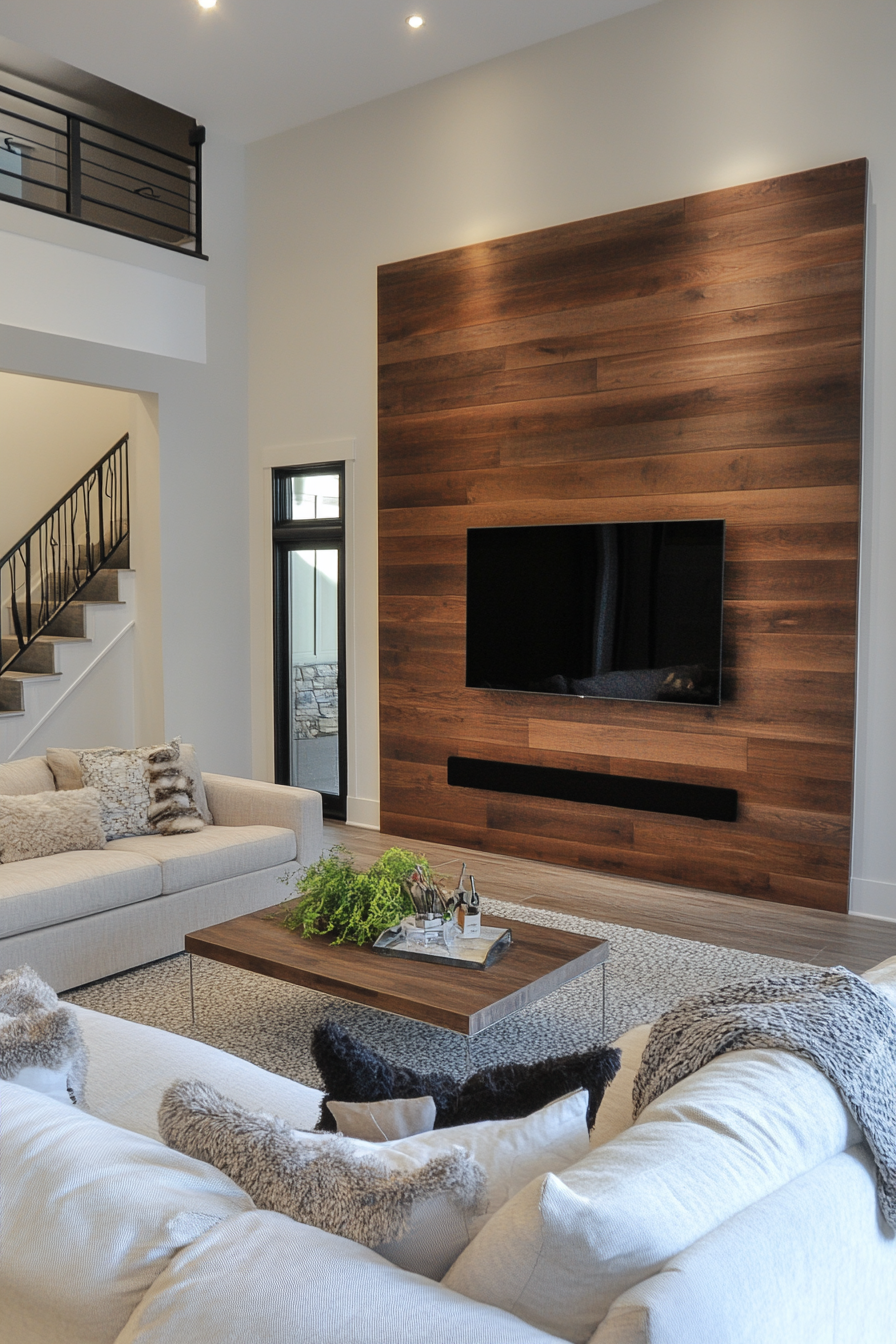
Another common and effective large sectional layout is simply placing the sectional facing the television.
Sectional configurations come in all shapes and sizes, but a basic L-shaped or extended straight sectional works very well for this arrangement.
Positioning a long sectional directly facing the TV helps delineate the media space from other zones in the open floorplan.
This is especially handy for defining a living room area within a larger great room.
The sectional acts as a divider between the seating/TV area and adjacent spaces like the dining room or kitchen.
An advantage of this straightforward sectional layout is it’s very accommodating for conversation.
Multiple people can face both the television and each other at the same time.
This arrangement also keeps additional walking paths and entrances open since the sectional faces just one direction.
The only potential drawback (pun intended!) is the sectional can obstruct views when facing the TV.
Be sure to choose the length and shape of your sectional carefully based on the dimensions of your room and media center.
Proper measurements will ensure everyone has a great viewing angle.
Split Sectional Facing Both Ways
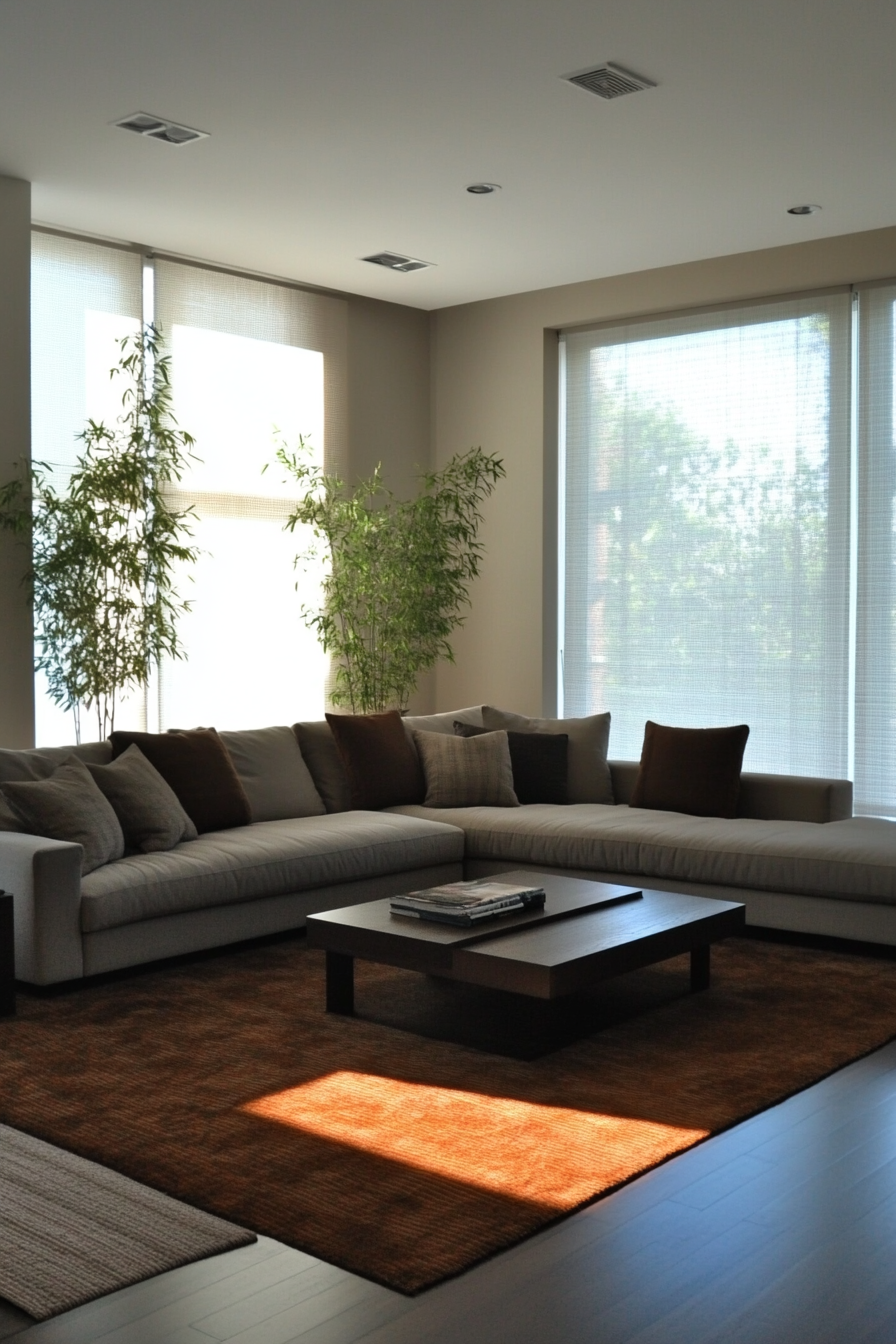
To take the previous idea a step further, consider a split sectional that faces both ways to divide and define two distinct zones.
A typical setup is facing one side of the sectional toward the TV and the other side toward an adjacent seating area.
This lets you create dedicated spaces for media viewing and conversation.
It maintains separation from other areas as well.
The split, two-way sectional designates where each space begins and ends.
Yet the open center of the sectional encourages flow between both areas.
The only difficulty with this arrangement may be finding adequate room for a sectional large enough to face both ways.
Make sure to measure carefully to ensure proper clearance on all sides.
But for sizable living rooms with seating zones at both ends, a split sectional can maximize and divide the entire space.
✨Click to Get My 101 FREE Designer Room Ideas
Perpendicular Sectional
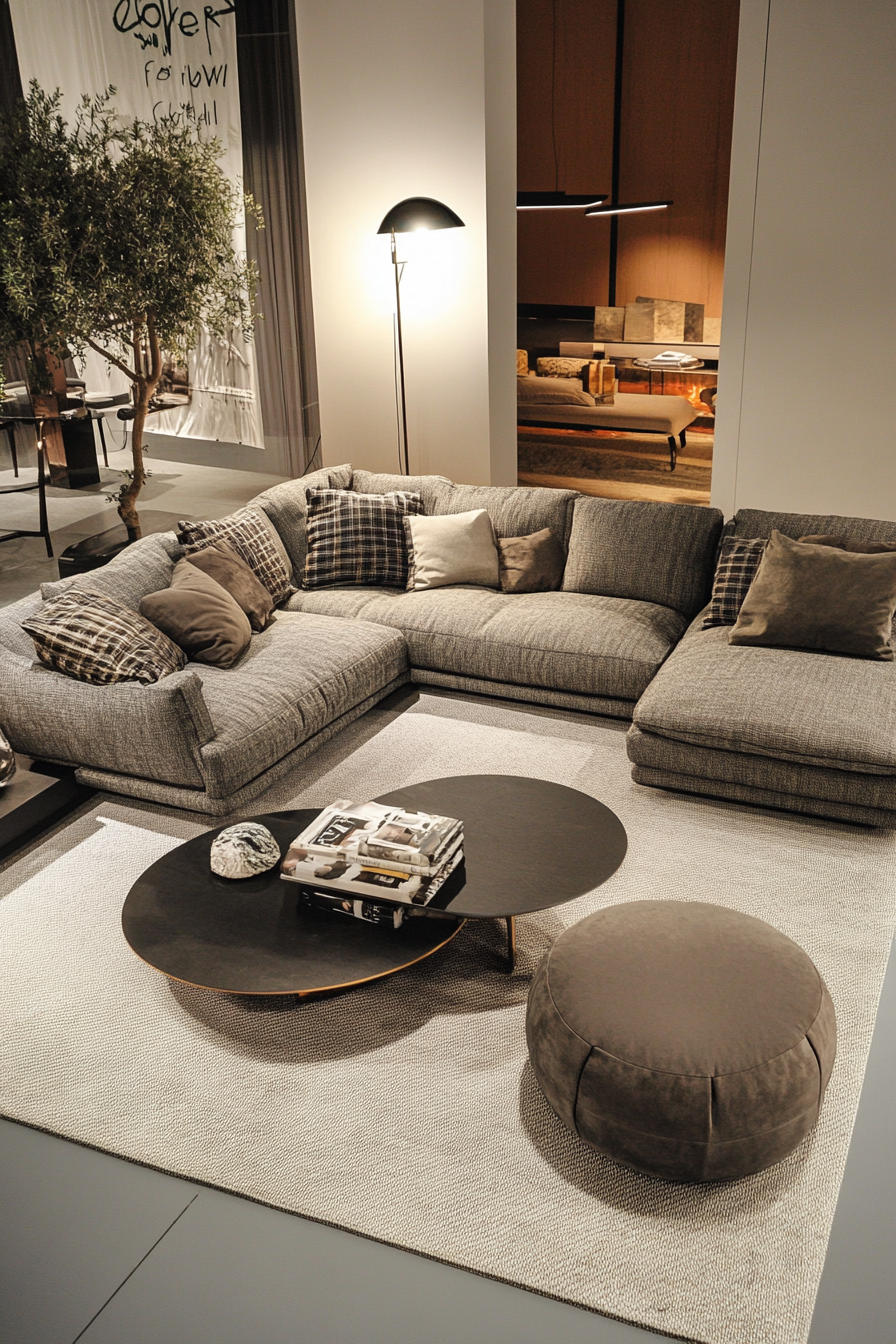
Here’s another simple yet effective large sectional layout – placing the sectional perpendicular to the focal point or media center.
This creates clear delineation between spaces while still feeling cohesive and connected.
For example, you can arrange the sectional perpendicular to the adjoining dining space.
This defines the living room seating while keeping it accessible from the dining area.
Or position the sectional perpendicular to the TV if the main entrance flows into that side of the room.
The perpendicular sectional arrangement is also great for large, awkward spaces like angled walls and corners.
Tailor the sectional shape to perfectly fit the unique room dimensions.
Just ensure there is enough space to walk around and access both sides and all seating.
The main challenge with a perpendicular sectional is it can block views and make the space feel chopped up.
Be thoughtful about placements and sightlines as you arrange the layout.
Also consider lower profile or thinner sectionals to maintain an open atmosphere.
L-Shaped Sectional Along Wall
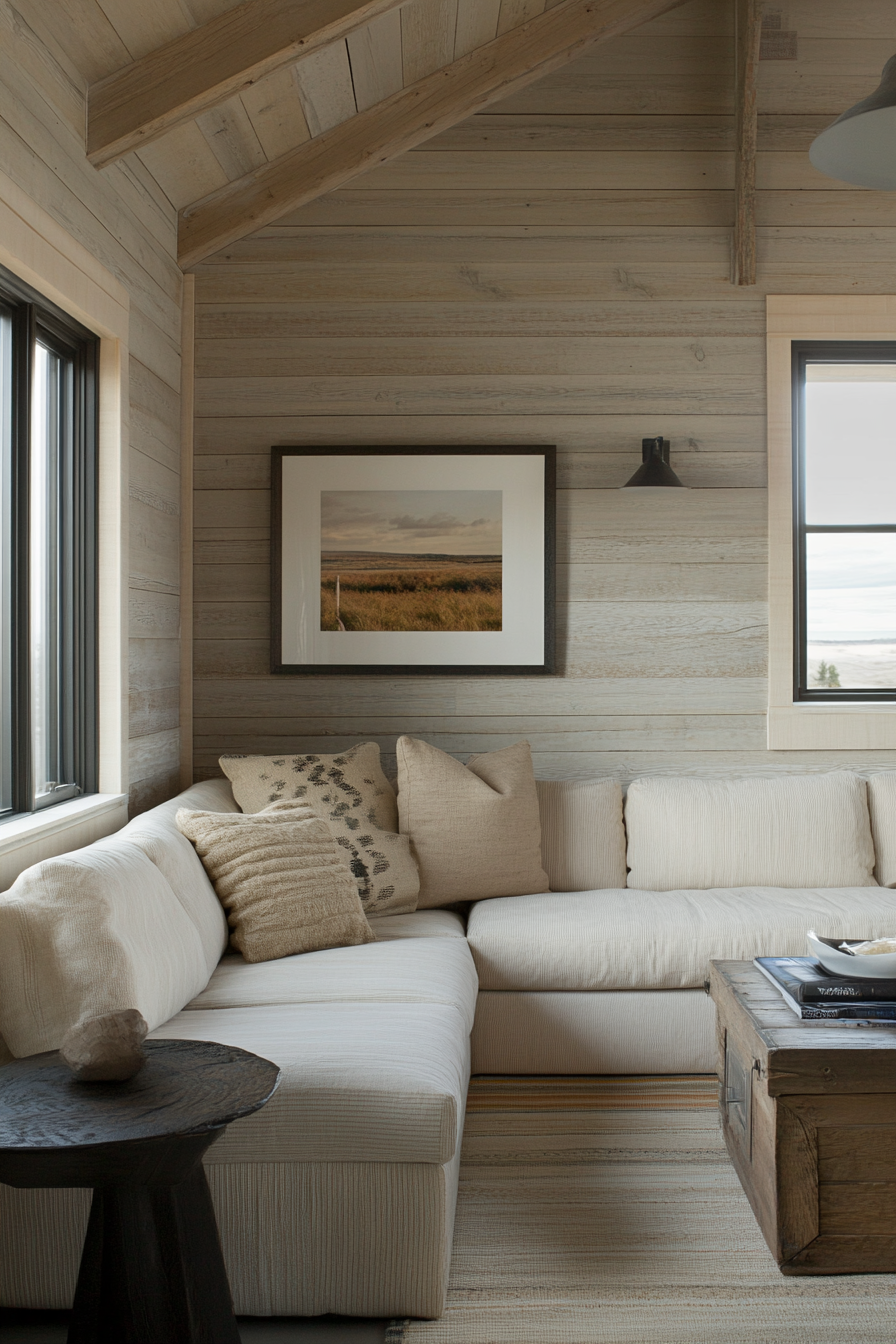
For a more out-of-the-way arrangement, try placing an L-shaped sectional along the wall.
Putting the sectional on one wall bordering an open room helps distinguish spaces while also keeping things open.
For example, this is a great way to define a living room space in a larger family room, great room or media room.
The sectional borders the seating area without dominating the entire space.
And it opens up the central zone for additional furnishings or design elements.
This layout works especially well for dividing a long, narrow room into two zones.
Center the L-shaped sectional on one of the long walls to create separation without overcrowding.
You can even use two smaller sectionals on opposite walls to make conversation and TV viewing spaces within a large area.
The main limitation of a wall-mounted sectional is restricted views and access.
Make sure to keep the layout balanced so the sectional doesn’t overwhelm the rest of the room.
Floating the sectional away from the walls can help maintain an airy, spacious atmosphere.
Sectional Defining Entryway
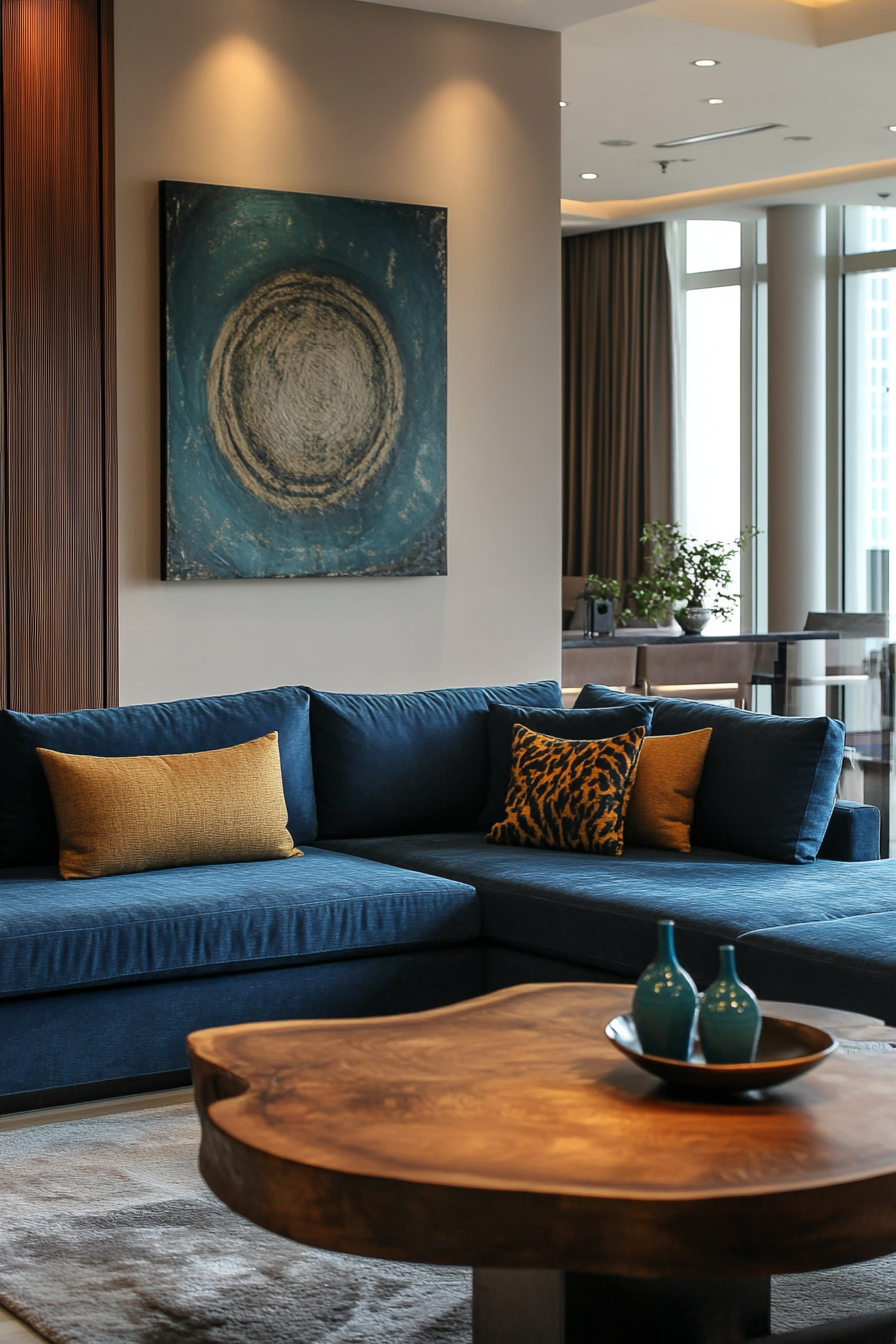
Room dividers don’t always have to split a space down the middle.
One creative option is to use a sectional to define the entryway and entrance zone.
This separates the entry from the rest of the open room without totally blocking views or access.
Arranging the sectional just behind the entryway provides a natural transition into the living space.
It designates the entrance yet feels welcoming.
Floating the sectional in the entryway also maintains an open line of sight across the different zones.
You can get creative with the sectional shape too – an L-shaped or U-shaped sectional hugs the entry niche perfectly.
Just be sure to allow adequate circulation space around and behind the sectional.
The entry and main living zone should still feel connected, not like two completely separate rooms.
Sectional Floating in Middle of Room
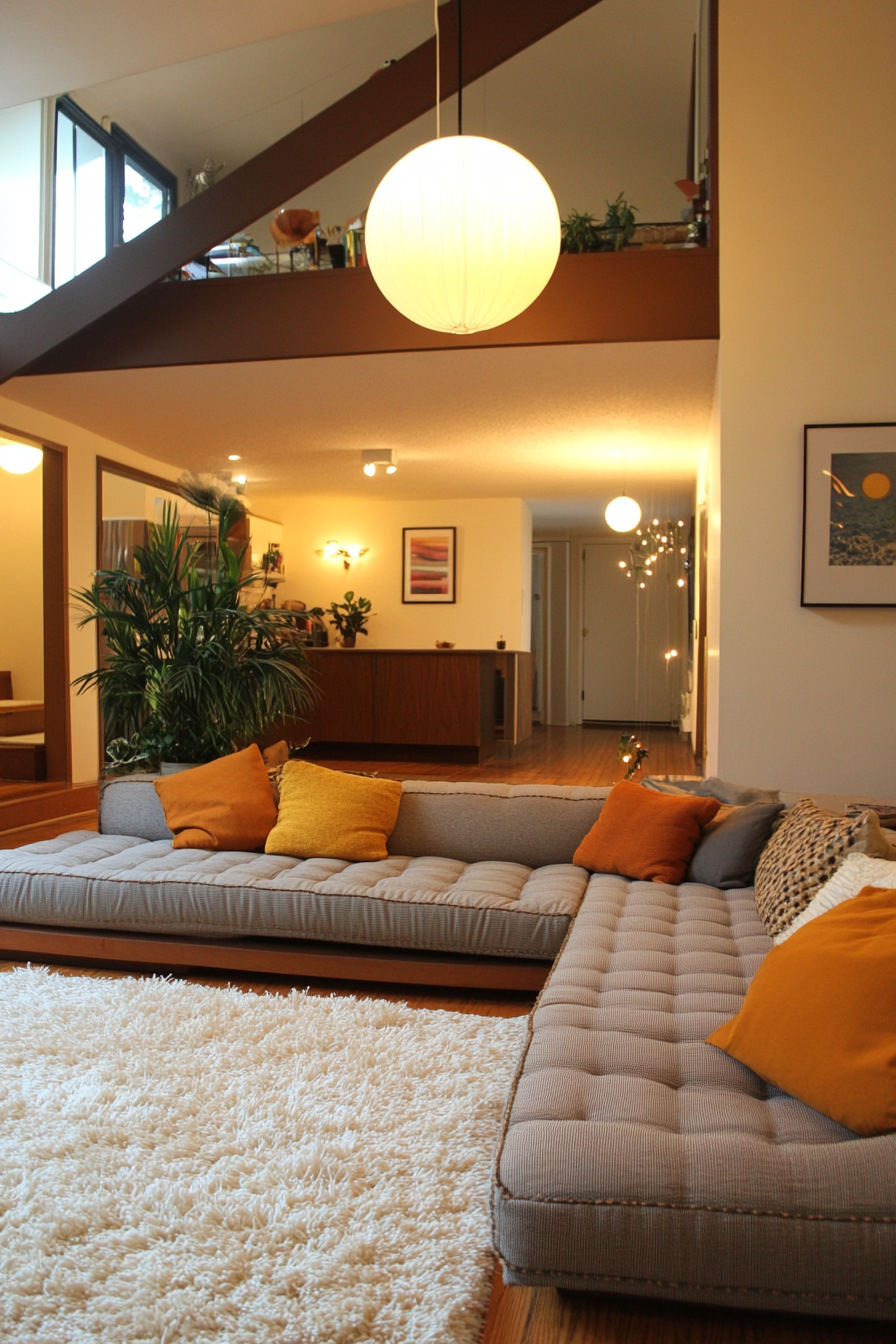
Speaking of floating sectionals, another idea is to place your large sectional right in the middle or midpoint of the open floorplan.
Much like the previous split sectional layout, this essentially splits the space into two main zones.
But it does so without backing the sectional against any walls.
A sectional floating in the center not only designates areas but also invites movement around and between them.
This helps maintain an open, mingling atmosphere compared to walled-off sections.
And it removes the constricting feel of a sectional pushed in the corners and edges of the room.
Floating a sectional is a bold, creative choice and works best in very spacious rooms.
Be sure there is ample clearance around all sides and that the sectional balances the room visually.
The scale and style of the sectional also matters more since it will be the focal point.
✨Click to Get My 101 FREE Designer Room Ideas
Sectional Defining Multiple Zones
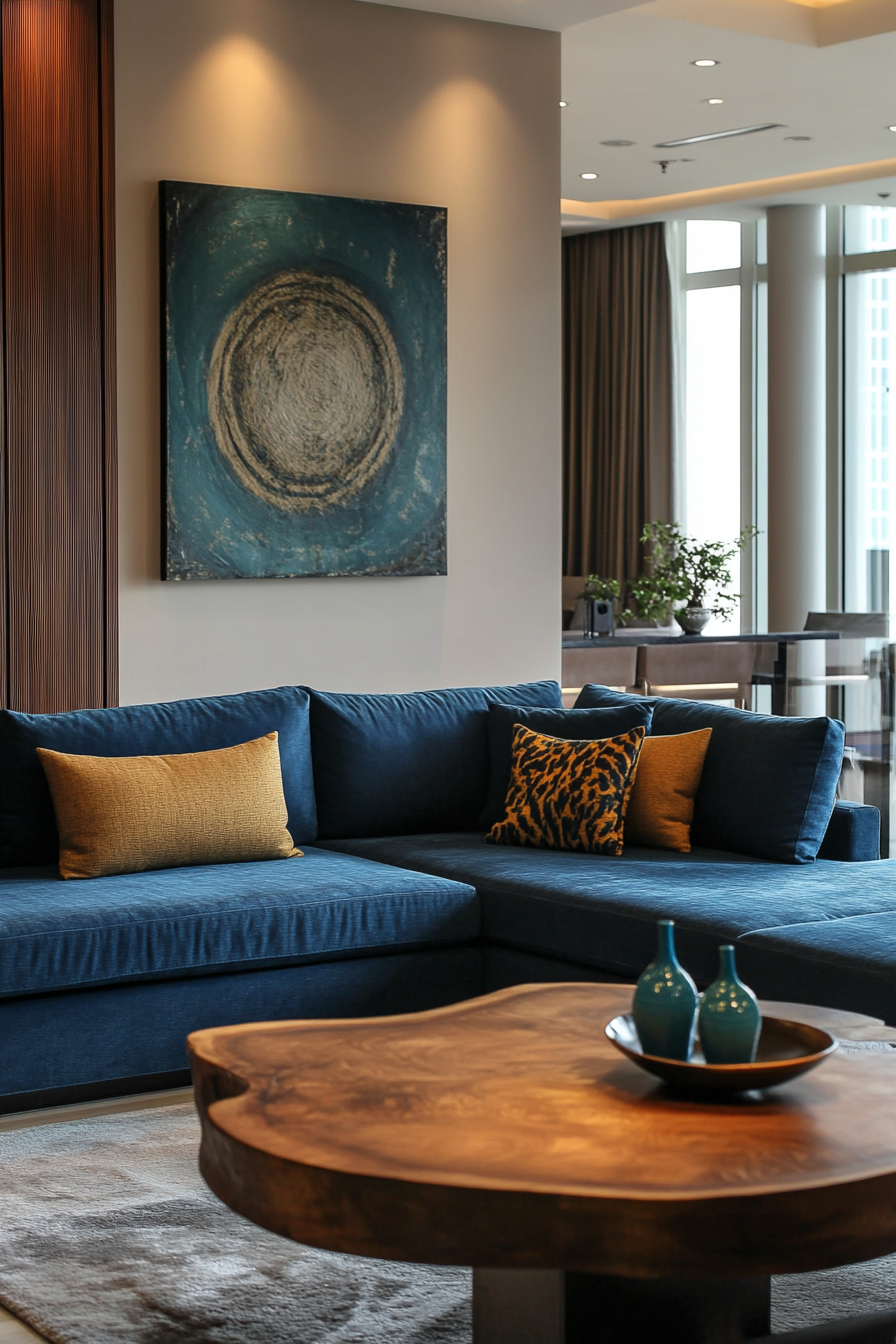
In very large, wide-open floorplans, you can use an extra-large sectional to define multiple zones at once.
For example, a deep U-shaped sectional could separate a living room, dining space and entryway in one continuous swoop.
Or try a long, thin sectional to divide a great room into three functional areas – media zone, conversation area and office space, for instance.
This helps carve out separate spaces that feel distinct yet still cohesive within the bigger room.
Using one long sectional to outline multiple zones provides visual consistency too.
The same sectional style threads everything together, even as you sit in different areas of the space.
Just be sure sightlines remain open, so the space doesn’t feel like disconnected chunks.
Small Sectional Plus Additional Seating
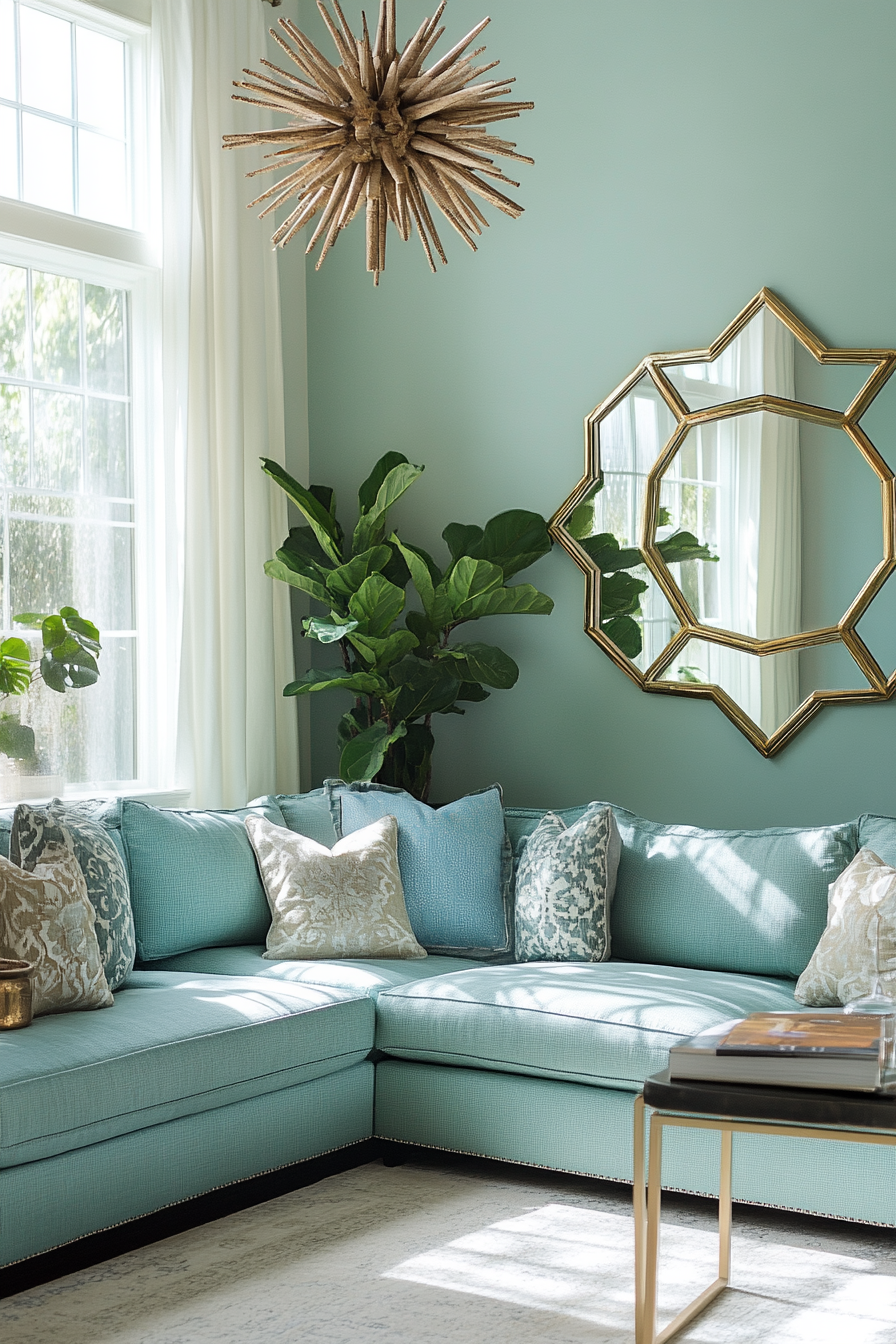
In smaller rooms, a full large sectional may overwhelm the space.
But you can still use a smaller sectional to define zones along with additional separate seating pieces.
The sectional anchors one space while the freestanding chairs, benches and chaises create a separate area.
For example, float a petite L-shaped sectional to designate the TV zone.
Then add accent chairs on the other side of the room for a reading nook or conversation area.
This keeps the seating areas distinct but the smaller scale still makes them feel cohesively connected.
This is a great option for attic living rooms, studio apartments and other petite spaces.
It provides both versatile seating arrangements and multi-purpose areas without overcrowding.
Mixing sectional and non-sectional pieces is very on-trend too for a collected, curated look.
Outdoor Sectional Defining Patio Spaces
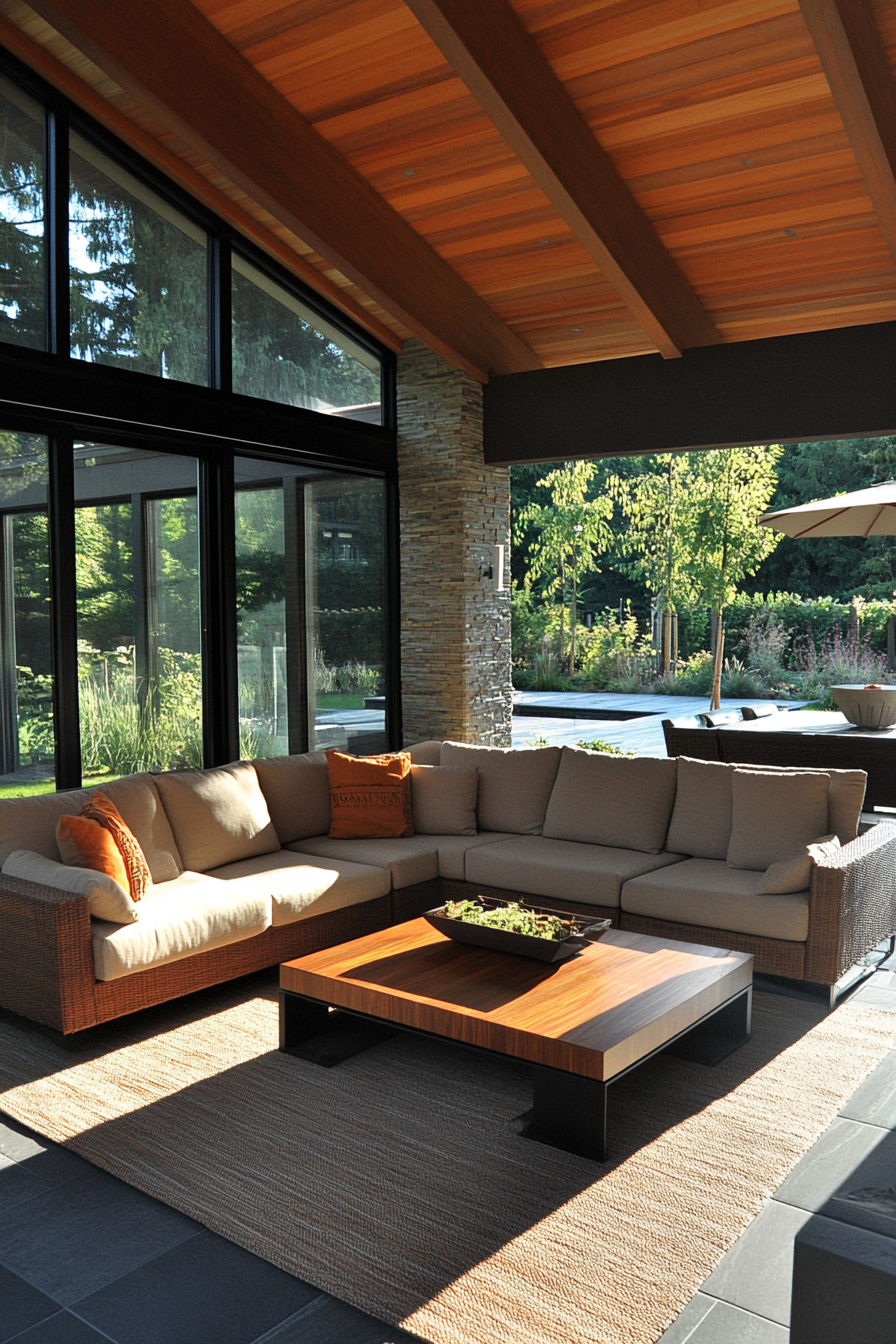
Don’t forget to bring sectionals outside to divide and arrange your patio areas too!
Sectional sofas are just as handy on the porch, deck or yard to designate different functional and conversational zones.
For example, place a U-shaped outdoor sectional around the fire pit to define that space and separate it from the dining area.
Or float a large L-shaped sectional on the patio to create both lounging and gathering areas.
You can even arrange sectionals perpendicular on an enclosed deck or porch to carve out entry, dining and seating spaces.
With outdoor sectionals, focus first on purchasing weather-resistant materials like treated wicker, aluminum or all-weather wicker.
Arrange the sectional shape based on your unique outdoor living features and existing spaces.
An outdoor sectional instantly elevates your exterior living rooms too!
Office Sectional
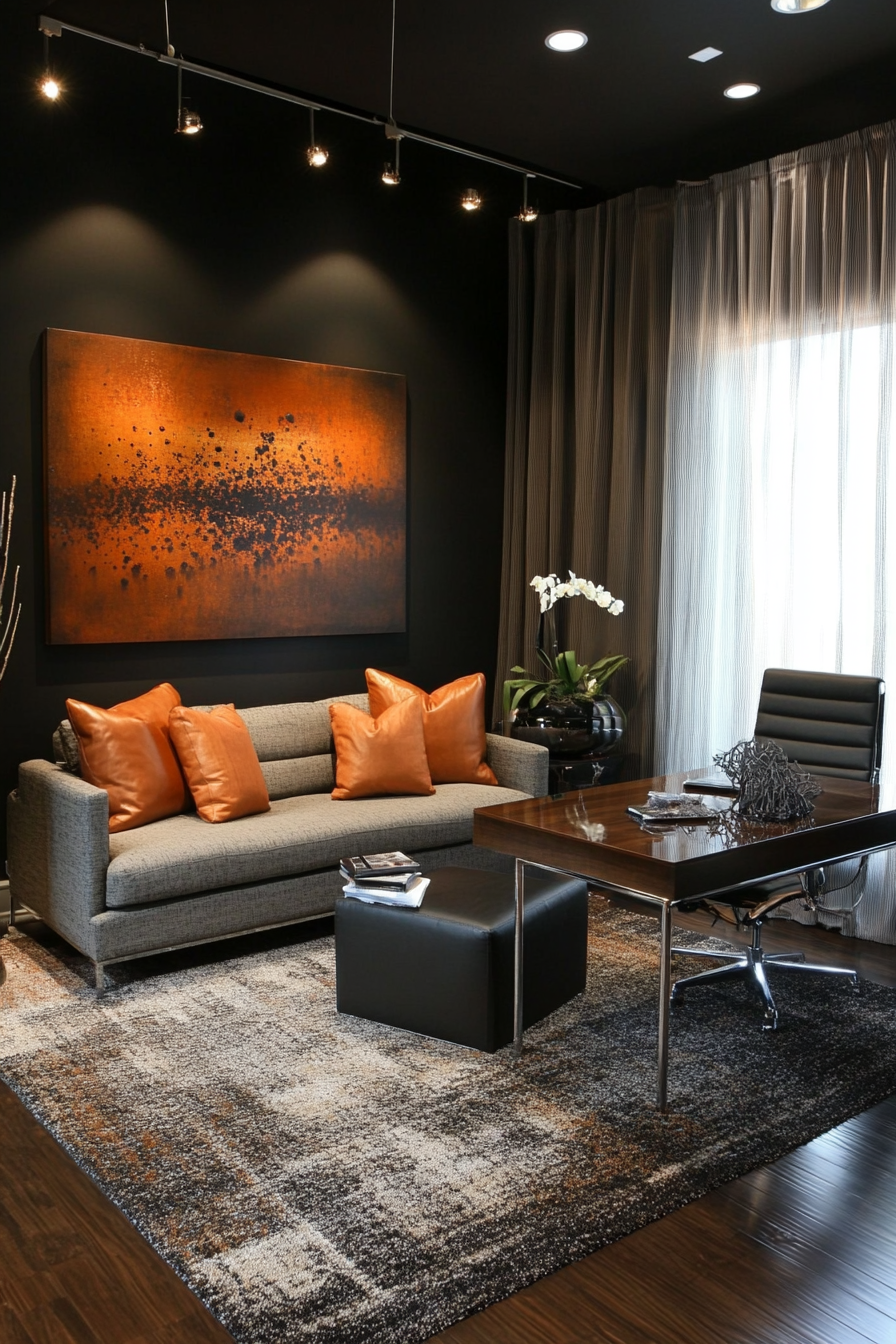
Lastly, let’s talk incorporating sectionals into home offices to arrange work and lounge areas.
A sectional with a chaise is perfect for creating a comfortable yet professional workspace within a larger room.
Position an L-shaped desk sectional in one area to carve out the office zone.
Then extend a chaise module across from it to make a casual meeting spot.
This defines both spaces while keeping the room open and collaborative.
In narrower home offices, you can float a sofa table behind a two-seater office sectional for the workstation.
Then add accent seating across from it for quick conversations.
A sectional with storage space like ottomans, drawers and shelves also comes in handy for tucking away office essentials.
As you can see, sectionals are incredibly versatile and can adapt to divide and define just about any room layout.
The key is choosing the right shape and scale for your space and existing architecture.
Measure carefully, find the best sectional configuration for your needs, and get ready to entertain in style.
I hope this overview sparked ideas on how to arrange sectionals to create functional zones within your open concept rooms.
Sectionals not only provide ample, flexible seating but also give homes a relaxed yet put-together vibe.
Let me know if any of these large sectional arrangements fit your home aesthetic!
I’d be happy to chat more about how to incorporate sectionals into your space.
With the right layout, sectionals can take your open floorplan from disjointed to immensely inviting.

